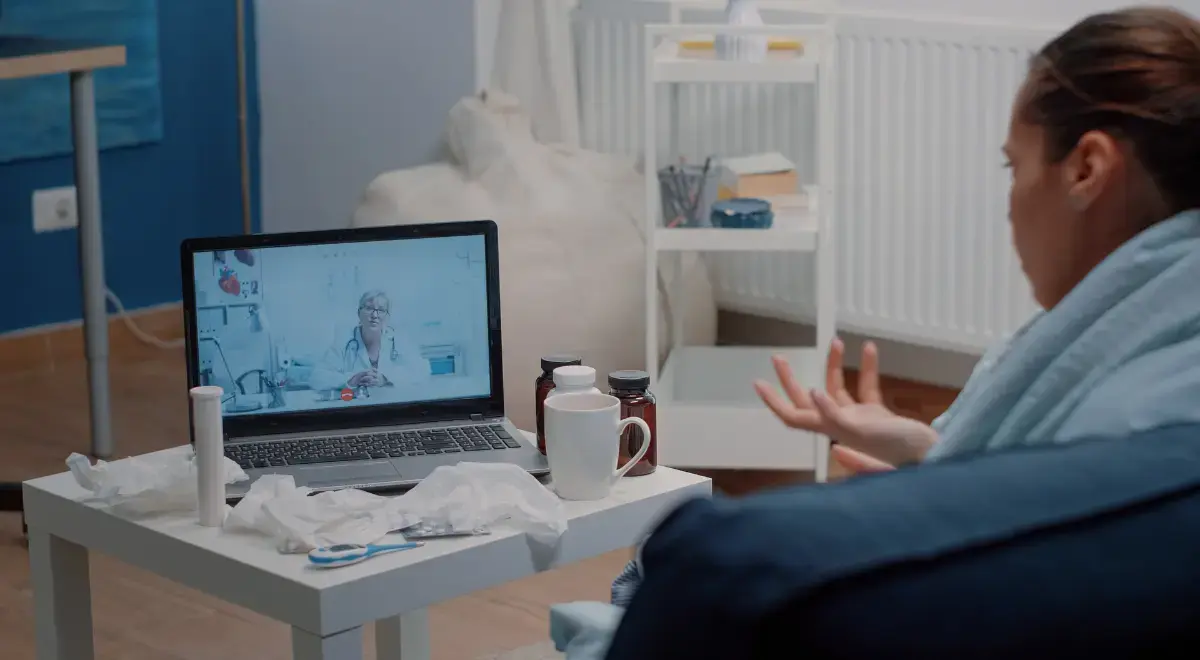How Does Remote Patient Monitoring Billing Work?

Remote Patient Monitoring (RPM) has revolutionized healthcare, especially in elderly health management and hospital-at-home models. However, with its growth, there’s been a shift in the billing rules. Let’s delve into the intricacies of RPM billing.
Table of Contents
ToggleHow Does Remote Patient Monitoring Work?
At its core, Remote Patient Monitoring (RPM) is a system designed for the off-site management of patients, especially those with chronic conditions. With the advent of COVID-19, its scope also expanded to acute conditions.
The combination of telehealth technology and medical devices, such as remote BP monitors and pulse oximeters, facilitates patient data collection and secure transmission. This data then forms the foundation for treatment plans.
Medicare has recognized RPM as a pivotal telehealth solution. Through digital devices, healthcare professionals can consistently collect and analyze patient vitals, bridging the gap between regular office visits.
Medicare Part B covers 80% of the RPM services, making it a viable option for many patients. The program is billed monthly, requiring at least 20 minutes of service for Medicare reimbursement. This service includes device setup, training, and daily usage.
Understanding Remote Patient Monitoring Coverage
RPM reimbursement is straightforward from a coverage perspective. Medicare and 27 state Medicaid services cover it. Many commercial insurance providers now cover RPM under telehealth policies, especially since the COVID-19 pandemic.
It’s essential to understand your patient population. You’re well-positioned to set up an RPM program if you have many Medicaid and Medicare patients with chronic conditions.
RPM Billing Guidelines and Reimbursement
The CMS (Centers for Medicare & Medicaid Services) introduced official RPM CPT codes in 2018 to outline the specifics of RPM billing. These codes, which include 99091, 99453, 99454, 99457, and 99458, detail the who, what, where, and why of RPM billing.
Using these codes accurately and promptly ensures reimbursement and enhances patient care capabilities.
Systematic Approach of Billing for RPM
- Verification: Ensure CMS requirements are met for each patient monthly.
- Claims Submission: Submit claims to CMS every month.
- Invoicing: Send invoices to patients receiving CCM services every month.
- Code Verification: Ensure there are no conflicting codes billed.
Remote Patient Monitoring CPT Codes
- CPT code 99091
A standalone code for RPM, covering 30 minutes of clinical time monthly. It requires at least one instance of remote communication.
Covers the initial patient program/device setup and education. It’s valid once per clinical care episode.
Pertains to the time spent in remote patient monitoring monthly. It necessitates data transmission from a remote device for at least 16 days within a month.
Covers the initial treatment management, reimbursing the first 20 minutes spent with a patient monthly.
An add-on to 99457, it covers additional 20-minute periods of treatment management, with a maximum of 60 minutes monthly.
Average Medicare Payments For CPT Codes
| CPT Code | Description | Average payment |
| 99453 | One-time payment for initial patient enrollment | $23 |
| 99454 | Monthly payment for continuous monitoring of patient data | $69 |
| 99457 | The monthly payment for 20 minutes of communication-related to data | $60 |
| 99458 | Additional payment for time exceeding 20 minutes but less than 40 minutes | $48 |
| 99091 | The monthly payment for collecting and interpreting the transmitted data (minimum 30 minutes required) | $56.41 |
CMS Guidelines for RPM Reimbursement
- Patients enrolled in Medicare Part B should be charged a 20% co-payment.
- Obtain patient consent for RPM services.
- Ensure qualified healthcare professionals order RPM services.
- Monitoring patients for a minimum of 16 days during each billing period is necessary.
- Ensure data can be wirelessly synced for evaluation.
- Confirm that each RPM device meets the FDA’s definition of a medical device.
- Ensure the RPM device can digitally and automatically upload patient data.
Your RPM Solution Starts with HealthArc
Your success in an evolving healthcare world hinges on effective Remote Patient Monitoring (RPM) management. Choose HealthArc as your trusted partner in simplifying RPM billing codes. Our intuitive platform offers a seamless interface, guiding you through accurate CPT code selection, automated claims, and streamlined invoicing with:
Precision Coding: Our algorithm ensures accurate billing codes for maximum reimbursement.
Seamless Integration: Integrate with 55+ EHRs effortlessly for data accuracy.
Automated Claims: Effortlessly process claims, focusing on patient care.
Tailored Management: Monitor diverse conditions with precision.
Real-time Insights: Receive alerts for timely patient interventions.
Data Security: HIPAA-compliant platform for utmost privacy.
Flexible Scalability: Grow your practice effortlessly.
Elevate your practice with HealthArc’s game-changing RPM billing solution. Contact us to book a demo and revolutionize your approach to remote patient management and billing.
Most recent blogs
Categories
- Behavioral Health Integration
- Cellular Remote Patient Monitoring
- Chronic Care Management
- Chronic Care Management Billing
- Chronic Care Management CPT Codes
- Chronic Care Management Program
- Chronic Care Management Software
- Digital Health Platform
- Principal Care Management
- Principal Care Management CPT Codes
- Remote Monitoring Devices
- Remote Patient Care
- Remote Patient Monitoring
- Remote Patient Monitoring Billing
- Remote Patient Monitoring CPT Codes
- Remote Patient Monitoring Devices
- Remote Patient Software
- Remote Therapeutic Monitoring
- Remote Therapeutic Monitoring Billing
- Remote Therapeutic Monitoring CPT Codes
- Telemedicine & RPM
- Transitional Care Management
- Transitional Care Management Billing
- Transitional Care Management CPT Codes
Related Posts
- February 9, 2024 | Read Time: 5 mins
Remote Patient Monitoring CPT Code 99091 Billing Guidelines
- December 28, 2023 | Read Time: 4 mins





